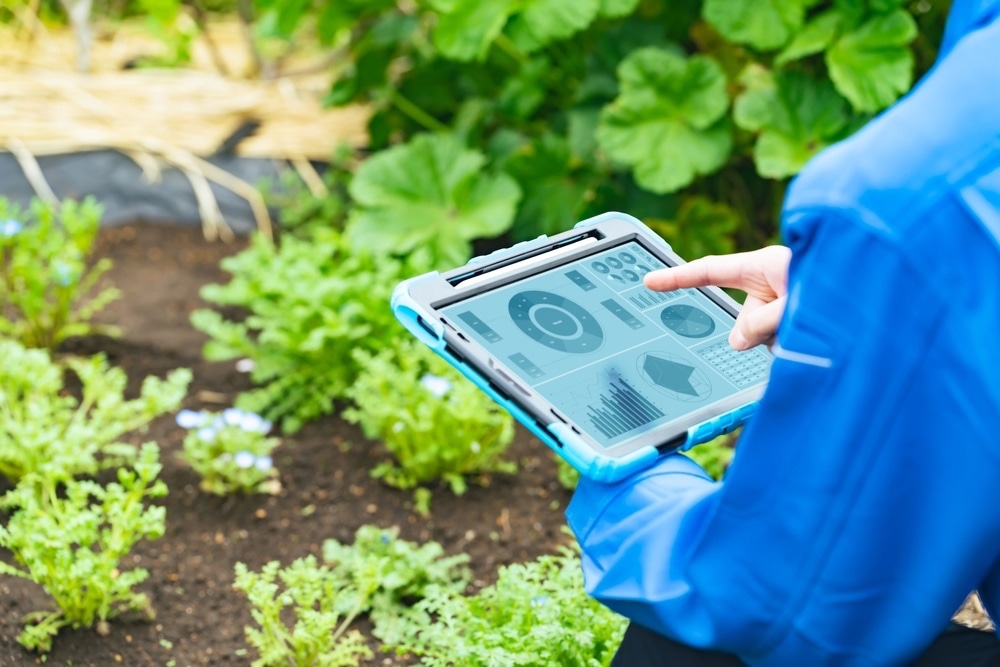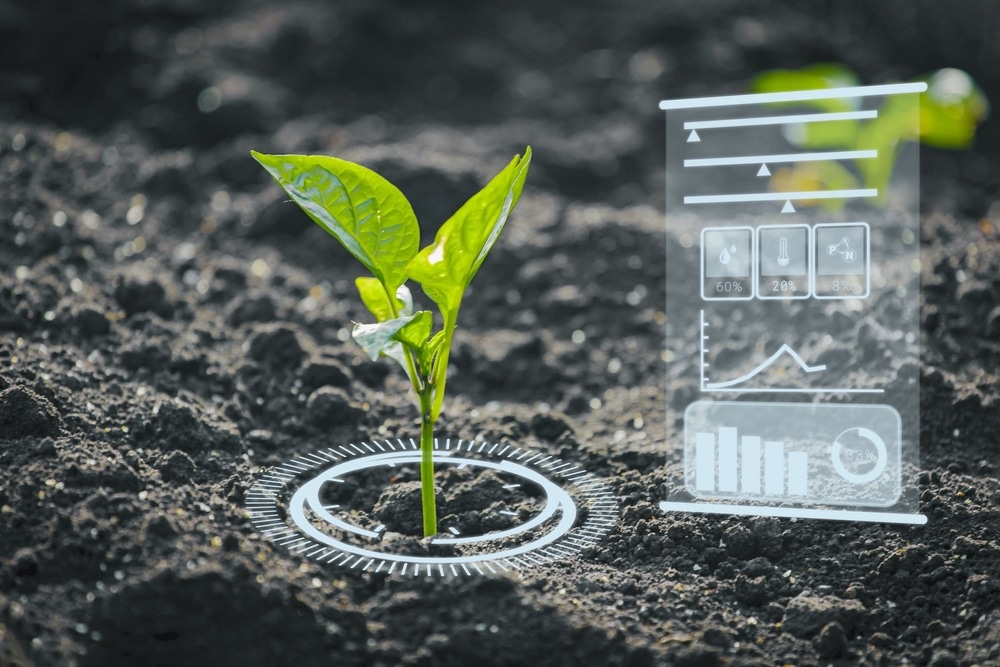In this article, we discuss the role of data analytics in furthering agrochemical research and development activities.

Image Credit: metamorworks/Shutterstock.com
In the past, agrochemical research and development has revolved around three main drivers of change: mechanization, which replaced or improved animal power in the farms; chemical improvement through pesticides and fertilizers; and genetic modifications, which improved the yield of different crop varieties.
All these improvements were required to match the agricultural production demands of a growing human population.
To match these demands further, new avenues of agricultural breakthrough have to be explored, and data analytics might be the way forward. Artificial Intelligence (AI) tools and state-of-the-art data-collection methods can be used to assist agrochemical R&D.
Definition of Data analytics
(Big) data analytics revolve around computations with predetermined algorithms in an attempt to solve specific problems. A part of data analytics is Artificial Intelligence, which allows the machine to ‘’think’’ and make decisions without human input. Machine learning and deep learning, which are used in agrochemical R&D are both systems that automatically learn and improve in a certain task.
The difference between the two is that deep learning is designed to operate like a human neural network. It learns from examples and can classify information or even predict outcomes.
With agronomists always looking for solutions in a multi-faceted science domain that requires collection, process, and interpretation of non-homogenous data (i.e., soil, environmental and satellite data), it is not surprising that data analytics can be of great help to them.
Technological Tools that Facilitate Agrochemical Data Analytics
Agronomists use most technologies based on GPS-enabled data collection systems or unmanned aerial vehicles that facilitate ‘’remote sensing’’, which provides information even at the millimetre scale.
Each data point has a bespoke geographic coordinate; this feature enables the understanding of the connections between many data layers, such as the yield or pesticide levels.
All these different layers can be later examined so that suggestions for future choices can be generated. The use of Geographic Information Systems (GIS) is also commonplace in agrochemical R&D.
GIS was developed for spatially analyzing GPS-referenced data. The various agrochemical databases comprising an agricultural GIS system can entail information on soil surveys, yield historical data and forecasts, remote sensing imagery and much more observational data.
By employing GIS, this data can be collected and referenced with their coordinates. Next, these datasets can be converted to a map that can illustrate the spatial heterogeneity of a field, thus informing the farmers on what the optimal way to work on that specific field would be, which is nowadays labeled as ‘’precision’’ agriculture.

Image Credit: Leonid Sorokin/Shutterstock.com
What is ‘’Precision’’ Agriculture?
Precision agriculture encapsulates all the activities that can be optimized in the agricultural sector. Namely, crop and weed management, farming, dairying and GPS-controlled trafficking. When it comes to precision farming, the farmers can use its insights to optimize the application of fertilizers and herbicides, increasing land and resource productivity, which leads to a better investment return.
Precision farming can also realize environmental benefits since the negative impact on the environment can be lessened by decreasing the use of herbicides and pesticides while keeping the crop yield intact.
When it comes to nutrient management, the farmer can be made aware of the nutrient variability a field has. This can help target fertilizer applications to the areas of the field where it is needed the most and use a lower amount in the rest of the field.
Data Analytics and Real Time Adjustments
Farmers have a few more techniques at their disposal that can provide quick information to help them with real-time dosages.
The simplest of them is the Leaf Colour Chart (LCC), which aids the farmer in estimating the nitrogen demand of their plants quickly. Farmers can choose to apply fertilizer in a series of split applications and can vary the amount of nitrogen in each split based on the information obtained by the LCCs.
Another tool is a device that can quickly measure general plant health and nutrient status. It is a handheld sensor that should be held at a distance of around 40 inches above the crop canopy for ideal results. The results are displayed on its screen.
A different useful device is a chlorophyll meter. The levels of chlorophyll in a plant and its nutritional state are closely linked. The output of this meter is called Soil Plant Analysis Development (SPAD).
A plant with a higher SPAD value is healthier than one with a lower SPAD value. A drop in SPAD value indicates a low amount of nitrogen in the soil, and that rectifying actions need to be taken (fertilizer addition).
A new way to measure chlorophyll levels is by the use of multiple wavelengths. When using one wavelength, the SPAD values may be influenced by factors such as the thickness and the color of the leaf. When using multiple wavelengths, more precise chlorophyll measurements can be obtained, along with measurements of other plant pigments such as anthocyanins and carotenoids.
Future Outlook
Sustainable agriculture by applying big data technologies has still a lot more room for growth, by employing robotics and other novel data sources like plant genetics.
However, the most crucial variable is that a higher level of trust between farmers and stakeholders needs to be created, along with attractive incentives for farmers to share their farming data. This is the only way forward toward a better utilization of agricultural data analytics.
Sources
Zhang, et al. (2021). Who will benefit from big data? Farmers’ perspective on willingness to share farm data; Journal of Rural studies, 88, pp.346-353. doi.org/10.1016/j.jrurstud.2021.08.006
Rao, et al. (2021). Big Data analytics and Artificial Intelligence methods for decision making in agriculture. Indian Journal of Agronomy, 66 (5th IAC Special issue), pp.279-287. Available at: www.researchgate.net/.../358349452_Big_Data_analytics_and_Artificial_Intelligence_methods_for_decision_making_in_agriculture
Prajapati, S. K., et al. (2023). AgriculturalTransformation through PrecisionFarming: Using AgrochemicalsEfficiently to EnhanceProductivity. Food and ScientificReports, 4(5), pp.36-50. Available at: www.researchgate.net/.../371109105_Agricultural_Transformation_through_Precision_Farming_Using_Agrochemicals_Efficiently_to_Enhance_Productivity
Further Reading
Last Updated: Dec 27, 2023